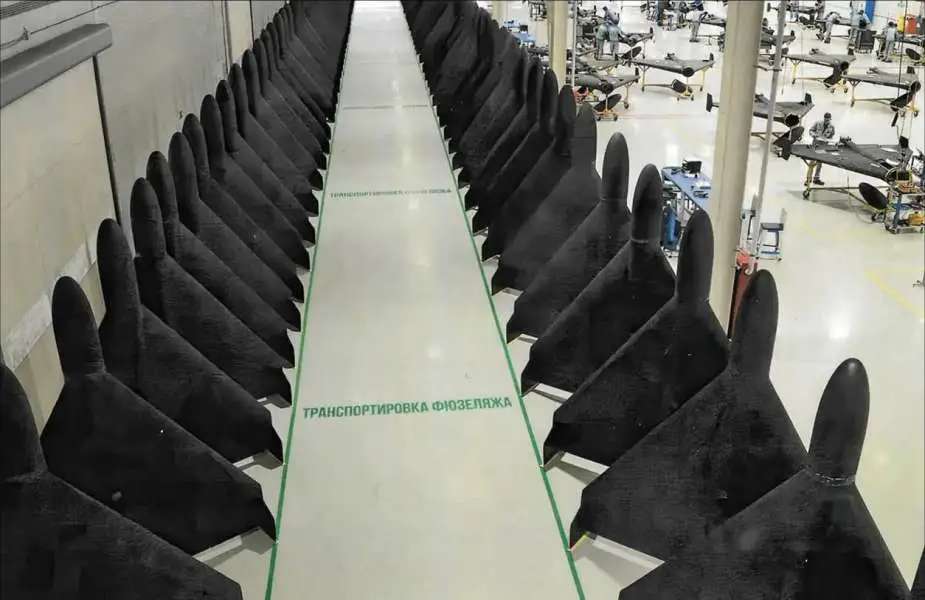Breaking news
Leaks Reveal Advances in Production of Shahed-136 Kamikaze Drone in Russia.
Recent leaks have shed light on progress in the production processes of the Shahed-136 kamikaze drones in Russia, revealing details on the improvement of their explosive payload capabilities and modifications aimed at extending their operational range. These insights, coming from sources at the Alabuga site in Russia leaked on April 21, 2024, underscore a shift in the capabilities of Shahed-136 warfare drones.
Follow Army Recognition on Google News at this link

Production of Shahed-136 drones in Russia. (Picture source: Russian Media)
The Shahed-136 is a kamikaze drone originally manufactured by Iran. It is designed to travel long distances before diving onto its target and attacking with an onboard explosive charge, thus destroying itself in the process. This type of drone is particularly used for missions intended to cause significant damage to critical infrastructure, military equipment, or enemy force groups, with a relatively low production cost compared to other armaments. The Shahed-136 is capable of semi-autonomous operation, with the ability to follow predefined paths while avoiding certain types of anti-air defenses, making it effective in asymmetric warfare environments where it can saturate enemy defenses through swarm deployment.
Documents reveal that the Shahed-136 drones manufactured in Russia have undergone improvements over their Iranian counterparts, which we will explain.
Initially equipped with a 50 kg explosive charge, the Shahed-136 has seen its payload capacity nearly doubled with a new 90 kg variant. This substantial increase not only enhances the destructive power of each drone but also aligns with the development of more specialized payloads. The latest versions include fragmentation, incendiary, and even thermobaric explosive charges, catering to various tactical needs on the battlefield.
In addition to payload improvements, the leaked documents reveal modifications to the drone’s design to optimize weight distribution and enhance aerodynamic properties. Repositioning the electronic warfare and avionics blocks from the explosive charge section to other parts of the drone allows for more centralized mass control, crucial for maintaining stability and maneuverability during flight.
Another improvement is in the operational range of the Shahed-136. By adjusting the fuel storage and consumption parameters, engineers at Alabuga have managed to add about 140 km to its flight range. This modification is facilitated by more efficient use of space and resources, ensuring that the drone can cover greater distances, which is crucial for operations deep behind enemy lines.
The modernization of the Shahed-136 UAVs indicates a strategic enhancement of Russia’s unmanned offensive capabilities. By increasing payload and range, these drones can deliver more powerful charges over longer distances, potentially altering tactical calculations for adversaries. The addition of diversified payload types also suggests a shift towards using drones for a broader range of targets.
This leak not only exposes the technical advancements in drone technology but also highlights the ongoing arms development race. As these unmanned systems become more capable and versatile, their role in modern warfare continues to evolve, prompting military and strategic recalibrations. It remains to be seen now the capabilities on the ground of these new Russian Shahed-136s and their real impact on the battlefield.
Defense News April 2024























